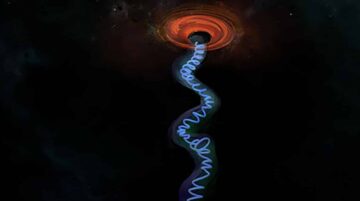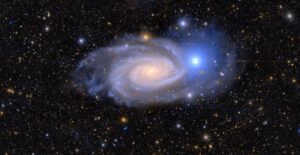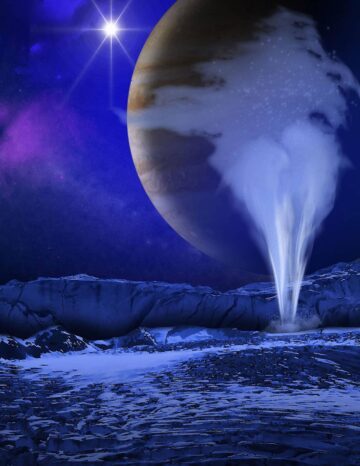Using the European Southern Observatory’s Very Large Telescope (VLT) in Chile, Planetary scientists from the University of Leicester’s School of Physics and Astronomy have unveiled the sharpest images of the frozen surfaces on two of Jupiter’s largest moons: Europa and Ganymede.
The images revealed a cocktail of chemicals that make up the frozen surfaces of Europa and Ganymede, offering insights into the processes shaping the chemical composition of these massive moons. It also includes geological features such as the long rift-like linae cutting across Europa’s surface.
Ganymede and Europa are two of the four largest moons orbiting Jupiter, collectively referred to as the Galilean moons. While Ganymede is the largest Moon in the Solar System, Europa is relatively similar in size to our own Moon.
The new observations produced a reflectance spectrum by measuring the quantity of sunlight reflected at various infrared wavelengths from Europa and Ganymede’s surfaces. These reflectance spectra are analyzed by creating a computer model that compares each observed spectrum to the spectra of various substances measured in laboratories.
The images and spectra of Europa reveal that Europa’s crust is mainly composed of frozen water ice with non-ice materials contaminating the surface.
Oliver King from the University of Leicester School of Physics and Astronomy said: “We mapped the distributions of the different materials on the surface, including sulphuric acid frost, which is mainly found on the side of Europa that is most heavily bombarded by the gases surrounding Jupiter.”
“The modeling found that there could be a variety of different salts present on the surface, but suggested that infrared spectroscopy alone is generally unable to identify which specific types of salt are present.”
Ganymede’s studies reveal that the surface comprises two primary types of terrain: recent parts with a lot of water ice and older sections primarily formed of a dark grey material whose composition is unknown.
The polar caps and craters of Ganymede are among the icy regions (blue in the photos) where an impact event has exposed the new, pure ice of Ganymede’s crust. The scientists explored the likely distributions of different salts, some of which may originate from within Ganymede itself, and how the size of the ice grains on Ganymede varies across the surface.
Located at a high altitude in northern Chile and with mirrors over 8 meters, the Very Large Telescope is one of the most powerful telescope facilities in the world.
Oliver King adds: “This has allowed us to carry out detailed mapping of Europa and Ganymede, observing features on their surfaces smaller than 150 km across – all at distances over 600 million kilometers from the Earth. Mapping at this fine scale was only possible by sending spacecraft to Jupiter to observe the moons up-close.”
Professor Fletcher said: “These ground-based observations whet the appetite for our future exploration of Jupiter’s moons.”
“Planetary missions operate under tough operating constraints, and we can’t cover all the terrain that we’d like to, so difficult decisions must be taken about which areas of the moons’ surfaces deserve the closest scrutiny. Observations at 150-km scale such as those provided by the VLT, and ultimately its enormous successor the ELT (Extremely Large Telescope), help to provide a global context for the spacecraft observations.”
Journal Reference:
- Oliver King and Leigh N. Fletcher (2022), Global modeling of Ganymede’s surface composition: Near-IR mapping from VLT/SPHERE, JGR: Planets, accepted. DOI: 10.48550/arXiv.2209.01976
- Oliver King, Leigh N. Fletcher, Nicolas Ligier (2022), Compositional mapping of Europa using MCMC modeling of Near-IR VLT/SPHERE and Galileo/NIMS observations, Planetary Science Journal 3, 72. DOI: 10.3847/PSJ/ac596d













